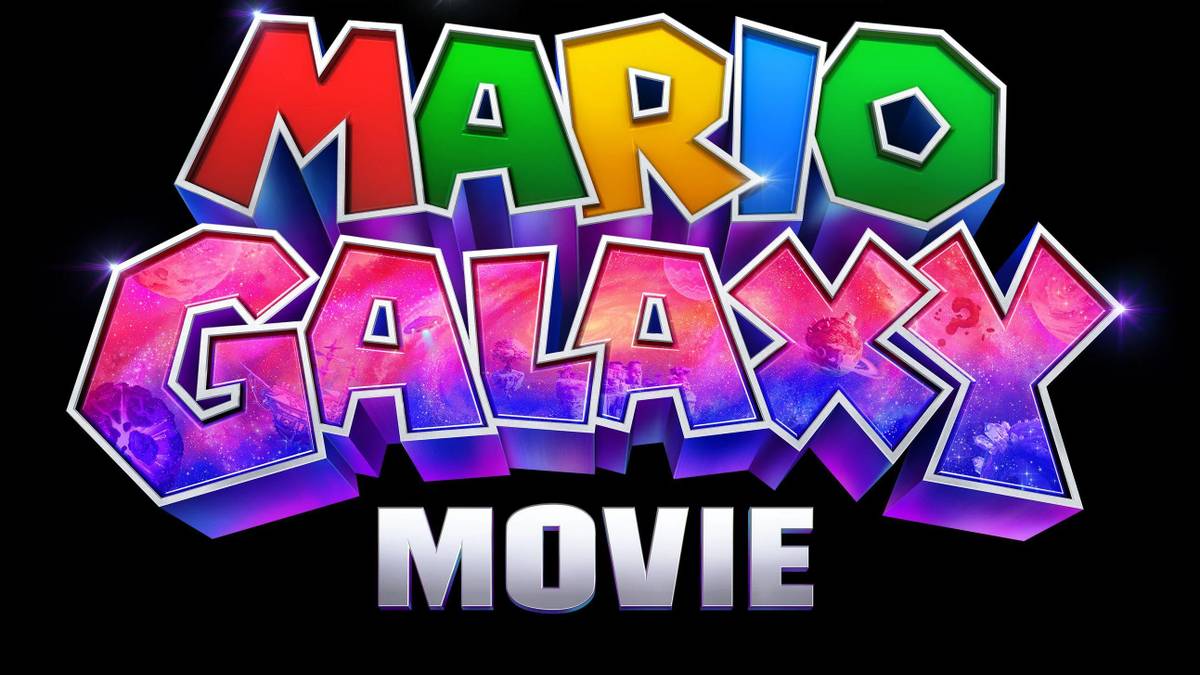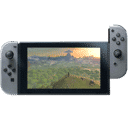
Summary:
Nintendo has set clear expectations: more movies are coming on a steady rhythm, not just one-off events. The signal is unmistakable. After the runaway success of The Super Mario Bros. Movie, Nintendo confirmed an animated follow-up titled The Super Mario Galaxy Movie, arriving April 2026, alongside a live-action The Legend of Zelda feature slated for May 2027. Leadership is framing this as part of a broader plan—a framework that supports regular releases without rushing, while keeping the creative spirit of each series intact. For you, that means a reliable flow of big-screen adventures with familiar faces, from Mario’s star-hopping escapades to Hyrule’s sweeping landscapes. We unpack what “consistent release” likely means in practical terms, how Illumination, Sony Pictures, and key creators like Shigeru Miyamoto fit together, and why Nintendo’s careful pace still points to a fuller slate. We stick to what’s verified—dates, teams, production updates—and translate that into plain expectations about trailers, marketing windows, and timing between premieres. If you’ve been waiting for a future where Nintendo’s worlds show up in cinemas more regularly, the path is being laid right now.
Why Nintendo is committing to regular movies now
Nintendo isn’t just testing the waters anymore; it’s mapping a route. The company watched The Super Mario Bros. Movie become a global draw and learned exactly how audiences want to meet its characters on the big screen. Instead of treating cinema as a rare celebration, leadership is talking about a steady cadence—something you can pencil into your year like a new game season or a theme park update. The reasoning is straightforward: films amplify the reach of beloved series, keep franchises present between major game releases, and spin up merchandise, music, and live events that reinforce each other. Just as important, this approach helps avoid the boom-and-bust rhythm of sporadic releases. A consistent plan evens out marketing, gives partners predictable timelines, and keeps fans engaged without fatigue. The tone from the top emphasizes building a proper framework, not a scramble, which tells you they want momentum without sacrificing the craft that defines their worlds.
What “consistent release” likely means for the calendar
“Consistent” doesn’t mean a film every few months; it points to a pattern you can track. With The Super Mario Galaxy Movie dated for April 2026 and The Legend of Zelda following in May 2027, you can already sense the pacing: one tentpole per year feels realistic. That tempo lets marketing breathe, avoids cannibalizing attention, and gives each series its own spotlight. It also dovetails with production realities—animation schedules, live-action shoots, and VFX pipelines all need room to do their best work. Expect long lead-ups with teaser drops tied to studio events and seasonal milestones. If a date shifts, it’s more likely about polishing or strategic spacing than loss of confidence. The big takeaway: Nintendo is shaping a rhythm that’s dependable enough to anticipate, but flexible enough to protect quality when it counts.
Super Mario Galaxy Movie: dates, team, and what’s confirmed
The next animated adventure is locked in with a title that says exactly what fans want to hear. The Super Mario Galaxy Movie lands April 3, 2026 in the U.S., with additional territories rolling through April and Japan on April 24. Returning creative partners keep the sequel rooted in what worked: Illumination’s pipeline, Nintendo’s close oversight, and a story tone that embraces spectacle without losing warmth. The Galaxy angle signals sweeping visuals—tiny planets with their own gravity, whimsical biomes, and set pieces that let characters float, spin, and sling through space. If you’re wondering about trailers, look for the familiar cadence: a playful teaser first, then a story-heavy follow-up that clarifies stakes and introduces any new allies or rivals. The marketing will lean on instantly readable iconography—stars, Lumas, and that orchestral swell that makes the cosmos feel friendly and massive at once.
What the Galaxy setting implies for pacing and spectacle
Galaxy isn’t just a backdrop; it’s a movement system. Expect sequences built around momentum—launch stars that fling characters into new vignettes, gravity flips that shift the joke or the danger, and musical cues that ride the arc of each leap. This lends itself to brisk chapters that feel like self-contained moments while still feeding a larger journey. For families, that rhythm keeps younger viewers engaged; for longtime fans, it’s a chance to spot nods to the Wii classic woven into modern animation techniques. The likely result is a film that moves fast without feeling rushed, anchored by character beats between the fireworks. It’s the kind of structure that wears rewatch value on its sleeve.
The Legend of Zelda (2027): production status and creative leads
Live-action Hyrule is moving forward with firm milestones. The film is slated to arrive May 7, 2027, and recent industry listings indicate cameras are rolling, with a schedule stretching into 2026. Wes Ball sits in the director’s chair—fresh off large-scale, environment-driven storytelling—while Shigeru Miyamoto and Avi Arad produce. That mix suggests a world-first approach: landscapes that feel ancient and lived in, creatures and ruins that tell stories just by how they’re built, and action that favors clarity over chaos. Casting details remain under wraps publicly, but the shape of the project is clear enough to trust the direction. Think sweeping vistas, deliberate pacing, and a focus on wonder punctuated by decisive moments of courage. If the timeline holds, you’ll likely see early looks aimed at fans first, then broader trailers focused on myth and heart.
Why Zelda’s tone asks for patience—and rewards it
Zelda isn’t a quip-machine action flick; it thrives on quiet beats between clashes. Translating that to live action means letting silence do some of the talking: a torchlit corridor, the hum of an ancient device, wind over grass that hints at a story older than the hero. When the fights arrive, they shouldn’t be a blur. You want read-able choreography with weight behind each strike, so the shield matters and the sword feels earned. That contrasts nicely with Mario’s buoyant sprint. Spacing these two releases a year apart isn’t just logistics—it preserves each series’ voice so neither has to shout over the other. Done right, the films will feel like cousins, not twins.
How Nintendo chooses which worlds hit theaters next
Selection isn’t a mystery box; it’s a balance of reach, clarity, and adaptability. A strong candidate has characters you can love within minutes, visual rules that translate cleanly to a non-gamer, and a tone that fits a two-hour arc. Mario and Zelda are obvious picks, but look at what else checks those boxes: Kirby’s gentle chaos, Donkey Kong’s bravado, Splatoon’s style-first energy, Animal Crossing’s cozy community, and even Metroid’s moody sci-fi. None of these are confirmed here; instead, the point is how the new framework opens doors. With a planned cadence, Nintendo can develop multiple scripts in parallel, greenlight projects in a staggered way, and avoid bottlenecks that come from treating every film like a moonshot. The watchword is fit: a story that honors the core while inviting newcomers to care.
The framework: partnerships, budgets, and creative control
On paper, the setup looks pragmatic. For animation, Illumination brings an efficient pipeline and a proven audience touch; for live action, Sony’s infrastructure pairs with producers who know how to protect brand character. Nintendo stays close—reviewing scripts, shaping design, and making sure the heart of each series stays intact. Budgets will reflect ambition, but the company’s recent comments about consistency suggest discipline as well. Expect spending that targets memorable sequences rather than wall-to-wall excess, and timelines that favor stability over headline-grabbing sprints. This is less about building a tangled crossover web and more about delivering individual films that stand tall on their own.
Global marketing beats: trailers, tie-ins, and theme parks
Marketing will feel familiar in shape and sharper in timing. A teaser that stirs sentiment, a main trailer that shows the engine, and a late push that focuses on family plans and premium formats. Tie-ins practically write themselves: limited snacks at partner theaters, themed days at Super Nintendo World, music singles that echo a leitmotif you can hum on the way out. Merch pops up in waves—plush, figures, apparel, and classy collector items that nod to long-time fans without leaving kids behind. The cadence across months matters as much as the final weekend. With a framework in place, these beats can be planned earlier and land cleaner, which is what you feel when a campaign clicks: nothing frantic, everything intentional.
The business rationale: from box office to long tail
Box office is the headline, but the long tail is the plan. Films lift game interest, streaming views, music listens, park attendance, and retail aisles. A parent who loves the movie suggests the game; a teen who discovers a soundtrack looks for the vinyl; a trip to the park becomes a tradition. Spread over markets and seasons, that flywheel justifies the “consistent” plan far beyond a single quarter. It’s brand stewardship with a theatrical core, and it works best when every piece is made with care. That’s why the framework talk matters—it’s how you avoid overreach while still showing up often enough to feel present.
Risks, delays, and how expectations are managed
Dates shift. It happens in both animation and live action, especially when weather, VFX capacity, or union calendars enter the chat. The good news: Nintendo has already shown it will adjust to protect quality. For you, the practical tip is simple—treat windows as living targets until the final marketing push. A one-month slide can make a big difference for theaters or school calendars and can actually help a film avoid traffic. The cadence approach helps here too: when there’s another project in the wings, there’s less pressure to ship the current one half-baked. Measured pacing beats heroic crunch every time. It also reinforces trust; when you walk into the theater, you should feel like the team took the time to get it right.
What this means for fans: accessibility, formats, and timelines
Expect broad theatrical runs, family-friendly showtimes, and premium format screenings for the set-piece crowd. Subtitled and dubbed options will remain a priority across regions, along with accessible screenings where partners offer them. Physical media still matters for Nintendo’s audience, so watch for editions that pair the film with art books, behind-the-scenes features, and music extras. On streaming, windows vary by region and deal structure, but the pattern is settling into a predictable path—cinemas first, then home options that keep the conversation going. Between films, park activations and smaller media drops keep the worlds warm so the next premiere feels like a reunion, not a reset.
Looking beyond 2027: reasonable, fact-anchored scenarios
No crystal balls here, just signals. A stated plan for consistent releases implies at least a 3–5 year horizon of active development across multiple projects. Sequels to successful entries are the most obvious plays because they already carry momentum; new series likely emerge in staggered fashion to avoid crowding. The practical expectation: one major film per year, with room for an occasional surprise if production lines overlap cleanly. The watch points are easy to follow—official investor materials, studio press updates, and concrete production listings. When those align, you know what’s real. Step by step, the calendar fills out, and the worlds you grew up with take turns on the biggest stage we have.
Key takeaways you can pin today
First, mark the dates you can trust right now: Mario in April 2026; Zelda in May 2027. Second, understand the philosophy: a framework that favors regularity and quality over hype spikes. Third, enjoy the contrast baked into the lineup: buoyant space adventure one year, mythic live action the next. Finally, manage expectations with the same patience Nintendo is showing. The plan is to show up often enough that these premieres feel like part of the calendar—big, joyful, and worth the wait—with each film standing on its own strengths while hinting at the breadth still to come.
Conclusion
Nintendo is turning theatrical releases into a rhythm you can count on. With The Super Mario Galaxy Movie locked for April 2026 and The Legend of Zelda set for May 2027, the message is simple: expect regular returns to these worlds, not rare sightings. The framework approach—clear partnerships, careful pacing, and creative guardrails—aims to keep magic and momentum in balance. If you’ve been hoping for a future where these stories visit cinemas reliably, that future is already underway.
FAQs
- Is Nintendo confirming more films beyond Mario and Zelda?
- Yes—leadership has stated plans for a consistent cadence, supported by a film production framework. Specific unannounced titles aren’t confirmed here.
- When does The Super Mario Galaxy Movie release?
- The U.S. date is April 3, 2026, with Japan on April 24, 2026, and other regions across April.
- What’s the current date for the live-action Zelda film?
- It’s slated for May 7, 2027, following a previously announced spring window.
- Who is directing the Zelda movie?
- Wes Ball, with Shigeru Miyamoto and Avi Arad producing.
- Will Nintendo build a shared cinematic universe?
- The focus described by leadership is a framework for steady releases; crossovers aren’t the stated goal. Expect stand-alone films that honor each series’ voice.
Sources
- Nintendo says it plans a ‘consistent release’ of new films following the Super Mario Galaxy and Zelda movies, Video Games Chronicle, November 5, 2025
- Illumination and Nintendo Announce the New Animated Film “The Super Mario Galaxy Movie”, Nintendo (Official), September 12, 2025
- ‘The Super Mario Galaxy Movie’ announced as sequel, Los Angeles Times, September 12, 2025
- When Does “The Super Mario Galaxy Movie” Premiere? Everything to Know, People, October 2025
- Nintendo pushes back live-action Zelda movie to May 2027, The Verge, June 2025
- Live-Action Zelda Movie from Sony and Nintendo Is Now Filming, Apparently, GameSpot, November 2025
- Nintendo Wants a ‘Consistent Release’ Schedule of New Films, VGChartz, November 2025
- Nintendo President Says Movies and Visual Media Are ‘Very Well-Suited’ to Nintendo Games, Wccftech, November 2025














